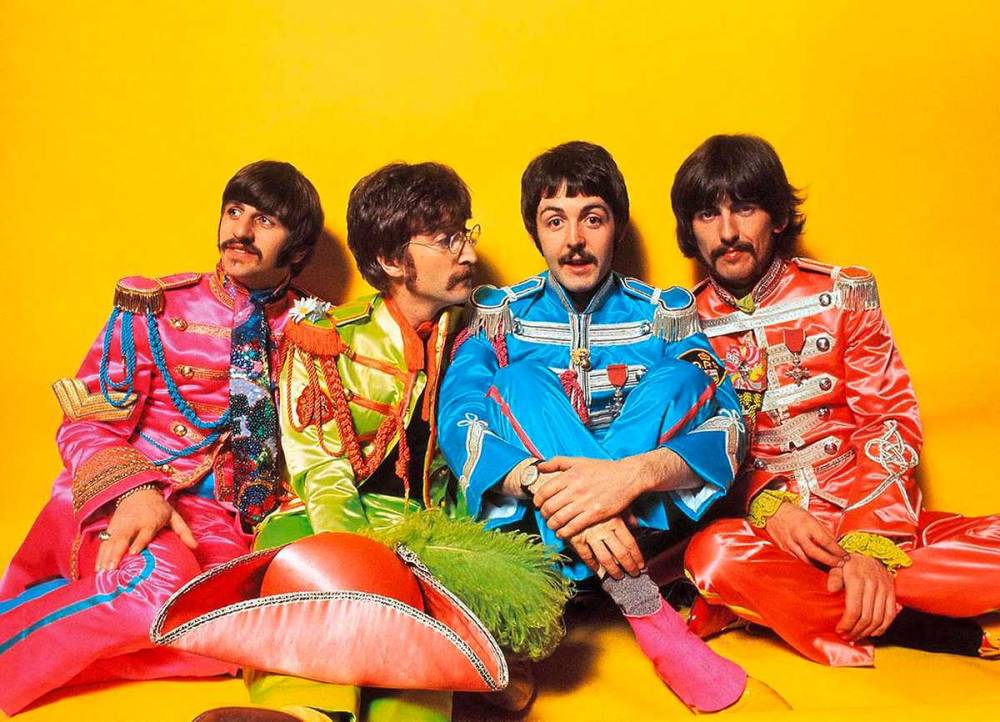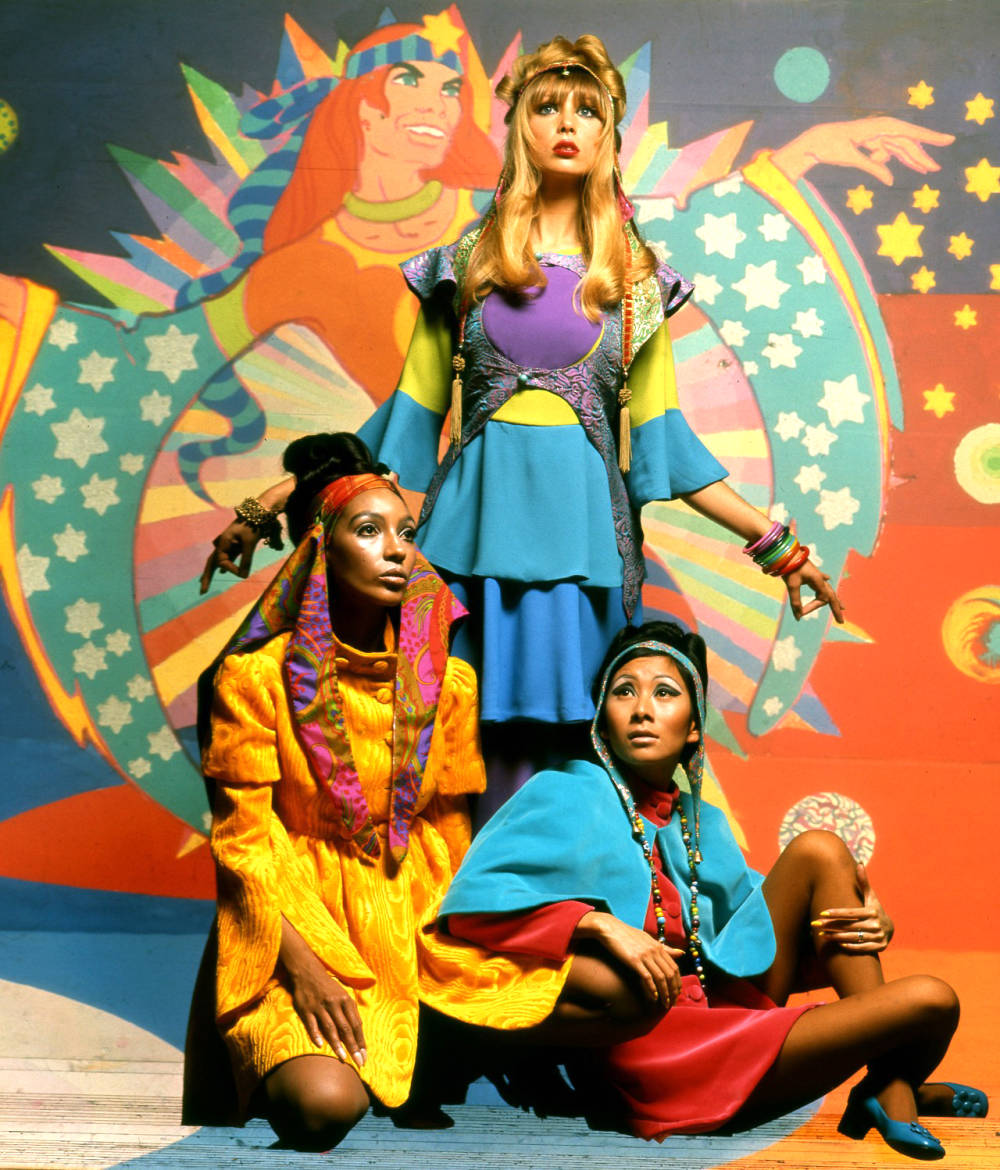
The Apple Boutique
Fashions, 1967
Located on the corner of Baker and Paddington Street in London, The Beatles’ Apple Boutique was essentially an ephemeral art piece mirroring the status quo of its time. The London store became the apex of psychedelic chic and a pillar of 1960’s youth popular culture. Opening in December of 1967, the launch was celebrated with a soirée including a guest list of notable celebrities such as John Lennon, George Harrison, Eric Clapton, Jack Bruce, Cilla Black and Kenneth Tynan.
With invitations reading “Come at 7:46, Fashion Show at 8:16,” both a sense of precision and playfulness became associated with the store’s management. The launch party also informed attendees of the overall aesthetic of the store, as footage of the event shows Simon Posthuma playing Arabic music on a flute, Barry Finch playing a small drum and Josje Leeger playing finger cymbals. The harmonious and collaborative effort would soon be quite indicative of the store’s future affect.

The Apple Boutique
Store Interior
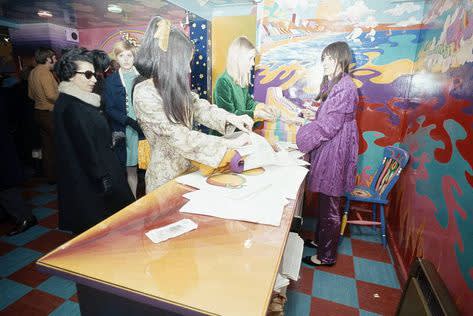
The Apple Boutique
Store Interior
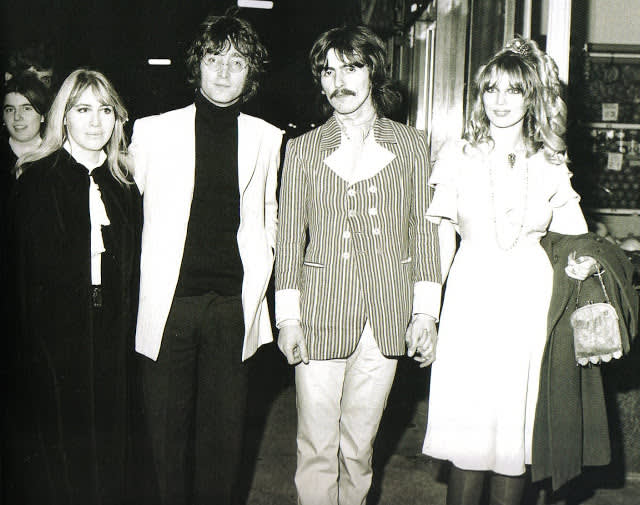
The Apple Boutique
Launch Party
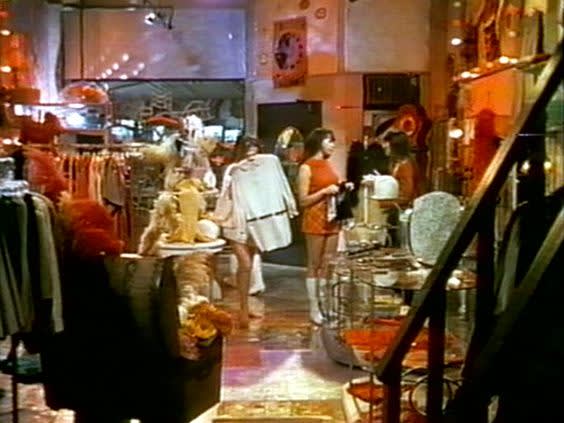
The Apple Boutique
Store Interior
The Apple Boutique was opened as an extension of The Beatles’ nascent brand, Apple Records. The exterior, designed by Dutch art collective 'The Fool', boasted a vibrant mural featuring undulating colors and a mesmerizing motif. In describing the store, Paul McCartney remarked that it was “a beautiful place where beautiful people could buy beautiful things.” McCartney’s statement was quite astute, as the boutique was ephemeral in nature. Being The Beatles’ first business venture outside of entertainment/music, and their first time using the Apple logo outside of the record world, their boutique epitomized experimentation in style, expression and taste.
The Beatles Apple Records
Branding
Interior of The Beatles Apple Boutique
The Beatles Apple Boutique Branding
Receipt
The Beatles Apple Boutique
Staff
The store conceptually promoted that everything was for sale, however, the stock was overwhelmingly comprised of fashion garments and accessories. The designs were sumptuous, shimmering and lavish. The Apple logo was even optimized and used on the labeling of the garments. The Fool collective created colorful clothes for both the boutique and The Beatles’ personal closets. One of the commissioned pieces they created for The Beatles was the iconic inner sleeve graphic design of the Sgt. Pepper’s Lonely-Hearts Club Band album.
The Apple Boutique
Ensemble, 1960s
The Apple Boutique
"Apple Badge", Main Label in Apple Boutique Clothing
The Apple Boutique
John May’s Bolero Jacket
Although the store’s laissez-faire energy added to its brand, it did not prove to be conducive of long term vitality. Due to the staff’s and customer’s malcomplience, particularly their compulsive stealing of clothes, the store was not producing enough money to sustain itself and was open for a total of 7 months. The Beatles, however, felt it was “uncool” to call people out on stealing, therefore promoting the continuance of this behavior. John Lennon even vetoed the use of the word “boutique” and simply called the store “Apple,” a feat that ultimately proved to be poignant as the store did not function in a standard way.
Apple Boutique
Fashions, 1967
The Apple Boutique
Fashions, Photograph by Karl Ferris, 1967
The Apple Boutique
Fashions, 1967
Apple Boutique
Fashions, 1967
The Fool collective were introduced to The Beatles’ by Pattie Harrison, who in September of 1967, gave the Fool £100,000 to design and stock the first outlet of a planned national chain of “Apple” shops. The Beatles’ took a lease on 94 Baker Street, a Georgian townhouse dating back to 1795. The ground floor was proposed to be the site for The Apple shop, despite its location being quite remote from the centers of fashion and design in 1960’s London.

The Fool

The Fool
Album Cover
It is seemingly that The Apple’s success was not rooted in its profitability, but instead in its design. The mural on the exterior walls of the building was designed by The Fool, which included Simon Posthuma and Marijke Koger, both of whom were Dutch designers, while they were also accompanied by artist Josje Leeger, Simon Hayes and Barry Finch. Having been given a building façade as their makeshift canvas, The Fool took advantage of the space, even employing art students to help create the psychedelic mural.

The Fool
Mural on Exterior of The Apple Boutique
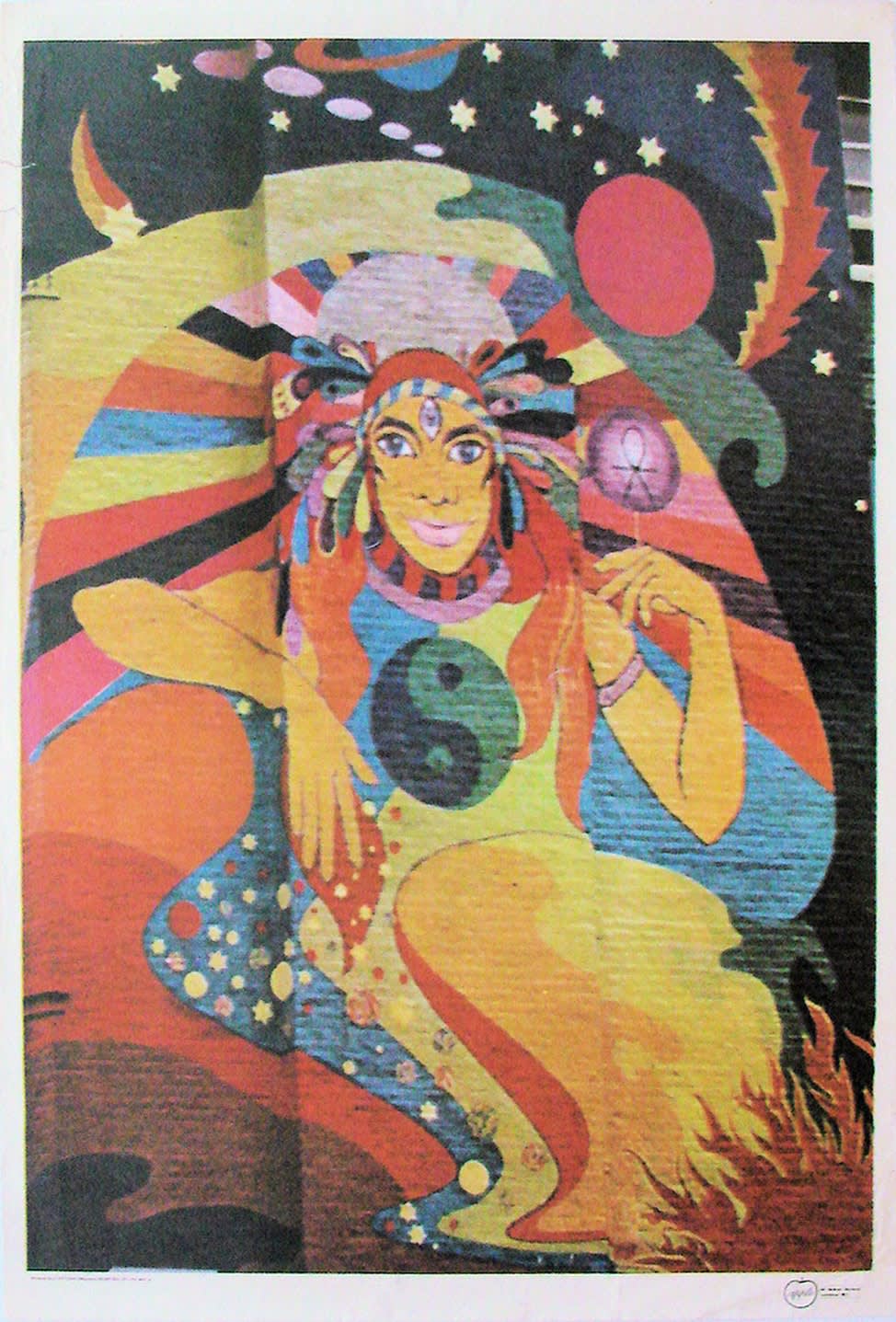
The Fool
Mural (Detail) on Exterior of The Apple Boutique
The concept was borrowed from the painting of the facades of the Lord John shop on Carnaby Street, but The Fool’s figurative design was executed with greater density and color. However, permission for painting the mural had not been granted by the government, thus prompting the Westminster Council to require the wall be repainted white, leaving only the word “Apple” in cursive script. The transformation in style from the florid “psychedelia” of the original mural, to the minimalism of the “approved” result, showed how slowly the more rebellious parts of the group were becoming mainstream and attempting to fit themselves into mass popular culture. In Fact, this marked the beginning of the boutique’s downfall and became regarded as a form of censorship that The Beatles’ and pop music in general frowned upon. In fact, censorship itself became a notion that would ultimately help progress The Beatles’ career.
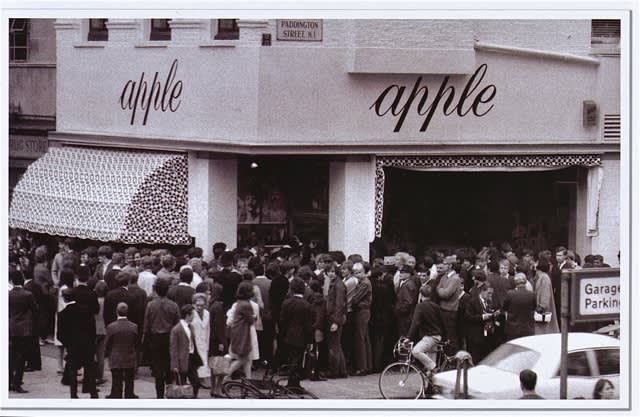
The Apple Boutique
White Facade
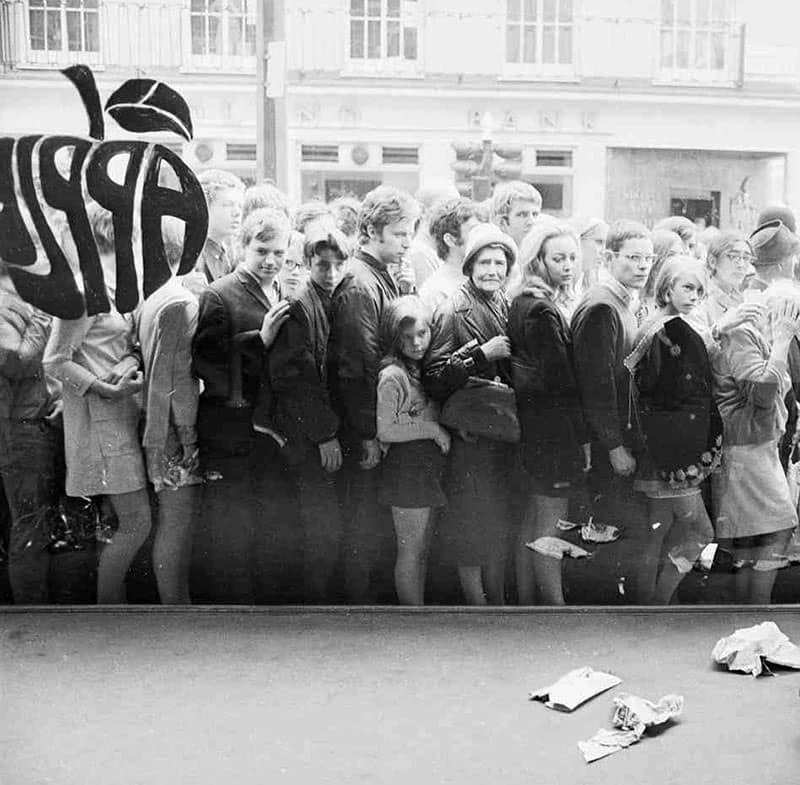
The Apple Boutique
1967
The Beatles’ Apple Boutique can therefore be considered to be a representation of its time. Its inherent ephemerality was well in line with the overall ephemeral quality of 1960s popular culture and psychedelic chic. The boutique served more than just a moment of cultural and aesthetic experimentation. The boutique prompted a fixation with the idea of censorship and the boundaries that were associated with it. Censorship would become a theme that The Beatles would explore and attempt to dismantle in their future endeavors, which was ultimately influenced by the design and outcome of The Apple Boutique.
